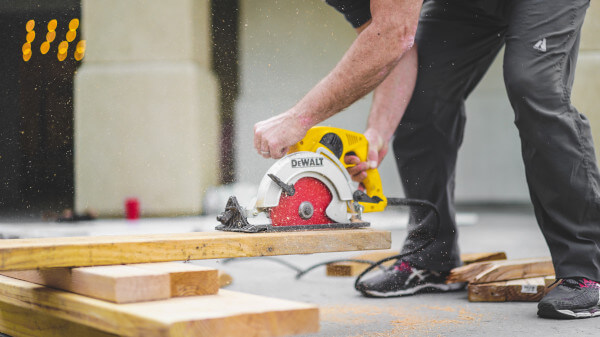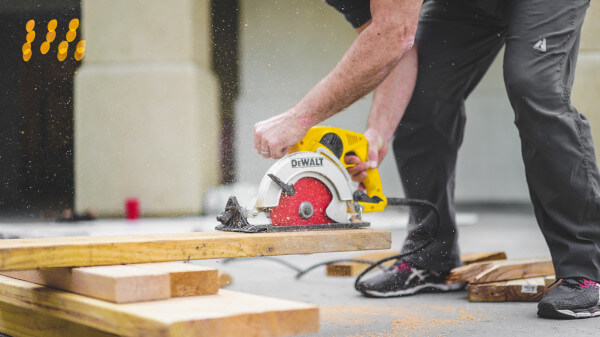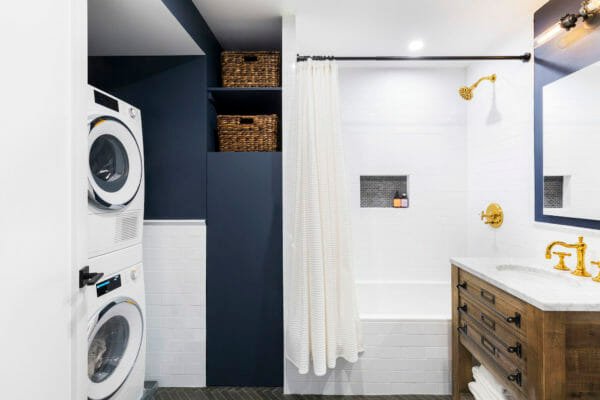Do You Need Permits to Remodel a Bathroom?

Discover if you’ll need a permit for your bathroom remodel based on the work, how you’ll file the permits, and your building codes

When do you need permits to remodel a bathroom?
It’s easy to understand why bathroom remodels are one of the most popular home renovation projects. We demand a lot from our bathrooms! In turn, upgrading to modern and more functional tubs, showers, faucets, and toilets makes daily life better. Building codes, however, dictate how far you can go with changes before requiring a permit. Here, Sweeten answers a common question on homeowners’ minds: Do you need permits to remodel a bathroom?
The short answer is, you usually need permits to remodel a bathroom. When you make changes to plumbing, electrical, or structural components of your home, you need a permit from the Department of Buildings. However, small aesthetic changes, like painting rooms, repairing plaster, or refinishing floors do not require a permit.
Sweeten matches home renovation projects with vetted general contractors, offering advice, support, and up to $50,000 in renovation financial protection—for free.
Bathroom remodeling permits for: Minor plumbing projects
You can make minor plumbing changes without a permit for a bathroom remodel. However, requirements vary between cities and counties across the country. For example, according to the New York City Department of Buildings
“Simple repairs or direct replacement of existing faucets or fixtures such as toilets and sinks are considered cosmetic work and do not require a permit. Direct replacement involves work that does not alter or change the fixture’s hot and cold water shutoff valves or fixture trap.”
So for plumbing, leave the valves and trap alone when you replace a faucet and you don’t need a permit.
Bathroom remodeling permits for: Minor electrical projects
In contrast, minor electrical work in a bathroom remodel usually requires a permit. According to the DOB again:
“An electrical permit is required for most electrical work, including handling of electrical wires that is performed in a residential home or business.”
If you’re just replacing a light fixture or switch? Your general contractor can walk you through it.
So, you can do simple repairs and fixture replacement without a permit for plumbing, but not for electrical work. Beyond that, it’s considered remodeling; so you’ll be dealing with permits, professionals, and more complexity. Don’t worry, though, as it’s a clearif slowprocess. The secret is to work with professionals who know what they’re doing.
Building codes by county
In other places in the U.S., you’ll have to research your local requirements for bathroom remodeling permits. You’ll find counties that have not adopted a specific building code but do require a permit and inspection for some types of work, like septic systems, plumbing, and electrical.
This scenario can be somewhat opaque, so do preliminary research on local building websites before talking with your contractor.
Unfortunately, updates to these regulations don’t happen regularly on their websites, and that holds true for official websites, too. Therefore, you’ll get the latest information from the people who deal with these issues regularly—general contractors
Above) A Sweeten general contractor helped Ashleigh and Jonathan navigate their permits on a tight timeline.
Navigating bathroom remodel permits
Filing permits for a bathroom remodel
For our purposes here, bathroom remodeling involves a new bathtub and/or shower, new toilet, and new sink, which may be freestanding or in cabinetry. It is common for many partial to full renovations to start with simple changes, like a new faucet or new flooring. It then grows when people realize they really dislike that bathroom and they don’t need to live with it any longer.
With any remodeling project, you should create a plan. That’s where your professional help comes in. For a project with any layout changes, whether they’re plumbing or electrical changes or not, you’ll need to work with a registered architect or a professional engineer. Those pros are referred to as the Registered Design Professional. They will file the permit application as the Applicant of Record with the Department of Buildings and ensure that the project meets requirements. You’ll need patience for this, as it’s common for your permit application to take 2-6 months for approval. It could take longer, depending on the extent of work and the building. Historic buildings add another layer of complexity.
Working with home associations & condos
Homeowners/condo/building associations may have a policy that requires an alteration agreement for work on your home. Moving forward will require paperwork to be submitted and approved.
Those associations usually have extensive oversight of the building and will review and approve or deny your plans. They may have their own architect or other experts review your plan. They’ll also want to confirm your insurance coverage and make sure you have a licensed contractor.
In addition, you may not be allowed to make major layout changes. Most building designs have “wet” spaces with plumbing “stacked” from floor to floor. For instance, a toilet drain will not be located above your downstairs neighbor’s bedroom. The plumbing system is also vented, and is typically constructed as a system within the entire building. Subsequently, any modifications must work within that system. Again, your architect or contractor should advise on what’s possible. Work with a vetted, licensed expert to avoid headaches (and a lot of back-and-forth.)
Behind-the-scenes in a bathroom remodel
A licensed general contractor will handle the remodeling work in your bathroom. They will have the professional contacts for subcontractors in the plumbing and electrical field. These professionals handle tasks like wiring, laying and grouting tile, and more.
The extent of work involved varies dramatically depending on the condition and layout of your home compared to what you want to achieve. The easiest changes involve the sink and faucet. Even with some plumbing changes, you’re not looking at tearing up a lot of the room and rebuilding.
Changing the location of the toilet, bathtub, or shower becomes much more complicated. Supply lines for water run through the walls or the floor/ceiling, but drains have to fit into the floor space and then join the plumbing “stack” in the wall. This is the combination drain and vent system. Changes to these parts can involve a lot of destruction before anything new can be installed. Bidetsan increasingly popular addition in recent yearswill need a drain and supply lines. This type of work is routine for a seasoned plumber but definitely must be done with care.
After the toilet, the other potential tasks seem pretty simple. Replacing an existing bathtub can be hard work, but is typically straightforward if you’re able to reuse the existing drain and supply lines. Changing from a bathtub to a tub/shower or to a walk-in shower becomes slightly more complex, but not substantially.
Where to start a bathroom remodel
If you want to renovate your bathroom, be sure to find the right general contractor who understands your vision—and can build the type of bathroom you want. During a site visit, they’ll help you discover ideal design features for your space, and will be invaluable in assisting with the permit process. With Sweeten, you can meet and hire the right expert to help build your vision at home, with no fee for our services—ever. Get started by posting your dream bathroom on Sweeten.
Want to see some examples of Sweeten’s bathroom handiwork? See Sweeten’s bathroom renovations.
The post Do You Need Permits to Remodel a Bathroom? appeared first on Sweeten.
Did you miss our previous article…
https://www.tampa-bay-homes-guide.com/?p=1765

